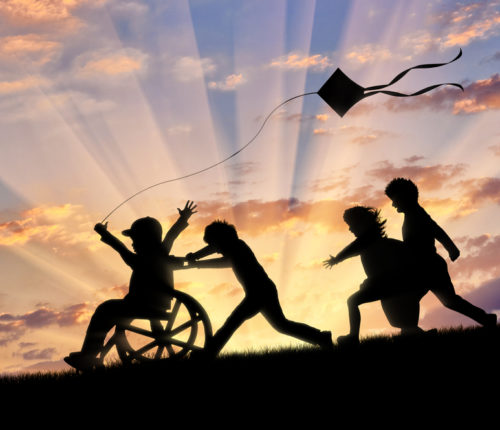
Life for a Child with a Birth Injury
Life for a child with a birth injury will greatly vary depending on type of injury, the severity and how much damage the infant’s body has endured. In some cases, an infant will go on to lead a normal life without the need for special accommodations.
However, if your baby has endured moderate to severe birth injuries that have caused brain damage and/or physical disabilities, you’ll probably need to make home, educational, social, and in some instances, occupational adjustments.
Life for a Child with a Birth Injury
Life for a child with a birth injury can be productive and full. Parents may need to make some modifications or accommodations to a general routine, but families affected by birth injuries can find happiness and balance. The key is finding the right support and a multidisciplinary healthcare team to manage the child’s care.
Of course, there are challenges for the individual and his or her family. Whether your child is an HIE baby or suffers from cerebral palsy, there are strategies that can help your family. Below, we discuss some of the factors that may affect life for a child with a birth injury.
Home Life
It’s common for children who suffer from birth injuries to have a hard time with fine motor skills and gross motor skills. That being said, you may have to change some things around your house to make an easier living situation for your child.
Depending the disability, there is adaptive equipment available that you can use to make your house as accessible as possible for your child. Other things you may need to consider include bath chairs or toilet chairs, and making your house accessible to wheelchairs or other devices.
At the very least, your child may have a learning disability which means that he or she may not go through normal developmental learning stages as quickly as other children. To that end, you may need to install gates at the entrances of stairwells to protect the child. Also, you may need to permanently put breakable or harmful items out of reach. This may be the equivalent of “baby proofing” the house, but for a much longer period of time.
You should also remember that the type of injury your child has will impact how long you will need to modify your home life. For example, children with cerebral palsy never grow out of the disorder, so they may require lifelong care. Furthermore, cerebral palsy life expectancy can vary greatly, meaning you could be caring for your child well beyond adulthood.
Care Accessories
Your child may require additional care accessories for everyday life. This could include:
- A wheelchair
- Orthotic boots
- Crutches
- Braces
- Specialized mattresses
- Special chairs for showering and toileting
If your child is in a wheelchair, he or she may require additional accessories, such as a neck pillow, cushions or additional braces. Ask your child’s occupational therapist which accessories are best for your child’s individual needs.
Education
Even the mildest forms of birth injury may require special allowances in education. Keep in mind, however, that this not true of all birth injuries. Some babies go on to heal without any cognitive disorders, learning disabilities or social and behavioral problems.
However for children who need additional assistance, the Individuals with Disabilities Education Act (IDEA) ensures that all children with disabilities have access to special education, early intervention and any other services appropriate for helping them succeed in learning.
Managed and mandated by IDEA, the Individual Education Plan (IEP) ensures that each child with a disability has an individualized learning plan in order to reach their educational goals. Teachers know what your child’s disability is and what accommodations can be made to ensure an appropriate education.
Also mandated by IDEA is the 504 plan. Named after section 504 of the Americans with Disabilities Act (ADA), the 504 plan is an law that prohibits discrimination due to disabilities. It also ensures that students get special allowances (such as extra time on tests) that allow the child’s education to be relevant. Your child may require additional tutoring or study time to ensure that he or she is understanding everything correctly.
Social Interaction
Social interaction can be difficult for children with disabilities to adapt to. Discrimination and bullying should never happen to children with a disability. Teachers and special education counselors look out for these kids to make sure that they are treated fairly. Even still, children with birth injuries may find it difficult to interact if their disability limits their social skills. Some birth injuries require children to be wheelchair-bound, which keeps them from running and walking with other kids.
To keep kids socially active, expose them to as many kids as possible. If you attend a church, bring them to youth events and let them hang around other kids. Or, if you have a library near your house, attend story time or other kids events. If you have a kids club in your area, bring your child to the club. While your child may have difficulty connecting to the group as a whole, he or she may find at least one friend in these social outlets. Sometimes, one extra friend can make all the difference.

